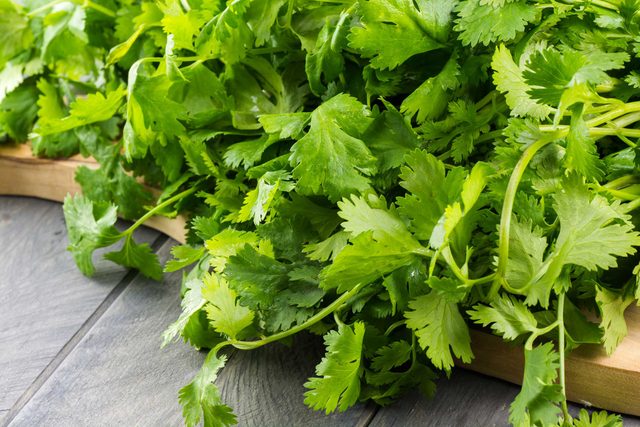The Scientific Reason Why You Hate (or Love) Cilantro
Updated: Apr. 07, 2021
Have you ever wondered why cilantro tastes like soap? The answer may be in your DNA.

A good debate centers around a harmless herb—cilantro or coriander. People either love it and use it in everything from fish tacos to chicken salad, or they can’t stand the taste of it. For some, cilantro tastes like soap, dirt, crushed bugs or metal shavings. It’s gained such a negative reaction that someone used their time, energy and money to create an online community called I Hate Cilantro, which has more than 5,000 members.
Before you join the club and publicly announce your aversion to cilantro, you may want to learn why you don’t like it.
According to The New York Times, the Oxford Companion to Food notes that the word “coriander” is said to derive from the Greek word for bedbug. (Gross, right?) It adds that the cilantro aroma “has been compared with the smell of bug-infested bedclothes” and that “Europeans often have difficulty in overcoming their initial aversion to this smell.” Research seems to confirm that your DNA plays a large part in this. A genetics firm, 23andMe, asked 50,000 customers whether they liked the taste of cilantro and whether they thought it had a soapy taste. They then compared the DNA of the participants. A common genetic variation was found among the cilantro haters that’s associated with the trait in a subset of people with European ancestry.
Another study by the group confirmed that one’s environment and culture might play a large role. The study found that 14 to 21 percent of people of East Asian, African and Caucasian ancestry disliked cilantro, while 3 to 7 percent of South Asians, Hispanics and Middle Easterners disliked it. Perhaps that’s no surprise because cilantro is a popular supporting ingredient in traditional dishes in these regions.
If you’re team cilantro and enjoy adding it to dishes, good for you! Its dark-green leaves contain antioxidants, essential oils, vitamins (folic acid, riboflavin, niacin, vitamin A and C, beta-carotene) and dietary fiber. It puts a little pep in your step while adding explosive flavor to soups, sauces, marinades, salads and homemade guacamole. Here are 25 more brilliant kitchen shortcuts you’ll wish you knew sooner.
If you simply can’t warm up to cilantro, other options exist. One common substitute is parsley, which is very similar to cilantro but more mild in flavor. Start with something simple such as our easy parsley butter. Now that you know what your taste buds reveal about your ancestry, find out what your food cravings can reveal about your health.